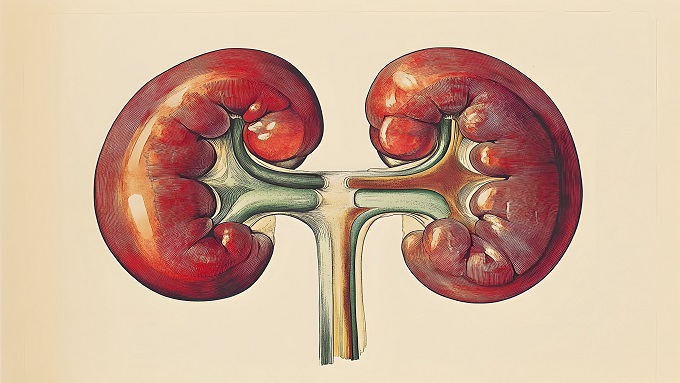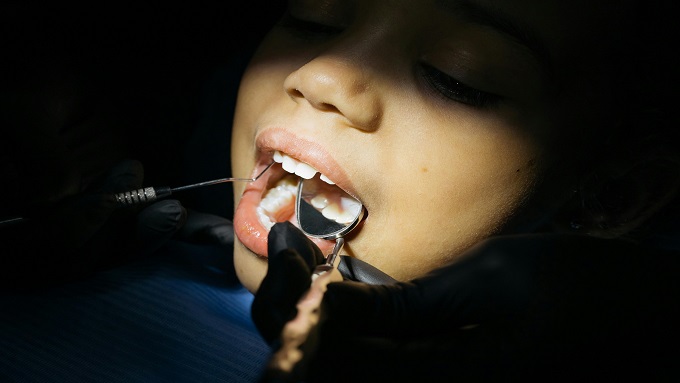Efficacy of Hyperbaric Oxygen Therapy in Systemic Lupus Erythematosus Patients Undergoing Maxillofacial Surgery

Downloads
Highlights
- SLE is the most common autoimmune disease that requires management after maxillofacial surgery.
- Hyperbaric oxygen therapy is a treatment that can help accelerate recovery in patients.
Abstract
Background: Systemic Lupus Erythematosus (SLE) is a common multifactorial autoimmune disease that carries a high risk of osteoporosis and fractures. The delivery of oxygen to the body's tissues through hyperbaric oxygen treatment (HBOT) promotes the healing of wounds and shortens the typical recovery time for patients. The way tissues react to illnesses and injuries can be altered by HBOT. Objective: This article aimed to determine the use of hyperbaric oxygen therapy (HBOT) post-maxillofacial surgery in SLE patients. Materials and Method: This research used a scoping review approach, accessing electronic databases like PubMed, Scopus, Science Direct, Elsevier, and Google Scholar. Discussion: SLE is characterized by producing various autoantibodies that interact with endogenous antigens, favoring widespread inflammatory injury. SLE impacts the immune system, diminishing its ability to defend against infections. Hyperbaric oxygen therapy refers to administering 100% oxygen to a patient inside a pressurized chamber with a pressure higher than one atmosphere at sea level. The surgical placement of the implant into the mandible or maxilla allows it to be retained during functional loading, as the bone integrates with the implant during growth. Conclusion: HBOT can improve the host response by activating inflammatory cells and ensuring optimal oxygen tension in people with SLE. This can help with osteogenesis and neovascularization, which fill empty spaces with new blood vessels or bone tissue.
Alduraibi, F. K., Sullivan, K. A., Chatham, W. W., et al. 2023. Interrelation of T cell cytokines and autoantibodies in systemic lupus erythematosus: A cross-sectional study. Clinical Immunology, 247: 109239. doi: 10.1016/j.clim.2023.109239.
Altug, H. A., Tatli, U., Coskun, A. T., et al. 2018. Effects of hyperbaric oxygen treatment on implant osseointegration in experimental diabetes mellitus. Journal of Applied Oral Science, 26. doi: 10.1590/1678-7757-2018-0083.
Ameer, M. A., Chaudhry, H., Mushtaq, J., et al. 2022. An overview of systemic lupus erythematosus (SLE) pathogenesis, classification, and management. Cureus. doi: 10.7759/cureus.30330.
Avishai, E., Yeghiazaryan, K., Golubnitschaja, O. 2017. Impaired wound healing: Facts and hypotheses for multi-professional considerations in predictive, preventive and personalised medicine. EPMA Journal, 8(1): 23–33. doi: 10.1007/s13167-017-0081-y.
Basta, F., Fasola, F., Triantafyllias, K., et al. 2020. Systemic lupus erythematosus (SLE) therapy: The old and the new. Rheumatology and Therapy, 7(3): 433–446. doi: 10.1007/s40744-020-00212-9.
Benli, M., Batool, F., Stutz, C., et al. 2021. Orofacial manifestations and dental management of systemic lupus erythematosus: A review. Oral Diseases, 27(2): 151–167. doi: 10.1111/odi.13271.
Choudhury, R. 2018. Hypoxia and hyperbaric oxygen therapy: A review. International Journal of General Medicine, 11: 431–442. doi: 10.2147/IJGM.S172460.
Drew, A., Bittner, N., Florin, W., et al. 2018. Prosthetically driven therapy for a patient with systemic lupus erythematosus and common variable immunodeficiency: A case report. Journal of Oral Implantology, 44(6): 447–455. doi: 10.1563/aaid-joi-D-18-00046.
Durcan, L., O’Dwyer, T., Petri, M. 2019. Management strategies and future directions for systemic lupus erythematosus in adults. The Lancet, 393(10188): 2332–2343. doi: 10.1016/S0140-6736(19)30237-5.
Eldisoky, R. H., Younes, S. A., Omar, S. S., et al. 2023. Hyperbaric oxygen therapy efficacy on mandibular defect regeneration in rats with diabetes mellitus: An animal study. BMC Oral Health, 23(1): 101. doi: 10.1186/s12903-023-02801-w.
Fanouriakis, A., Tziolos, N., Bertsias, G., et al. 2021. Update οn the diagnosis and management of systemic lupus erythematosus. Annals of the Rheumatic Diseases, 80(1): 14–25. doi: 10.1136/annrheumdis-2020-218272.
Fava, A., Petri, M. 2019. Systemic lupus erythematosus: Diagnosis and clinical management. Journal of Autoimmunity, 96: 1–13. doi: 10.1016/j.jaut.2018.11.001.
Fu, Q., Duan, R., Sun, Y., et al. 2022. Hyperbaric oxygen therapy for healthy aging: From mechanisms to therapeutics. Redox Biology, 53: 102352. doi: 10.1016/j.redox.2022.102352.
Ganapathy, S., Vedam, V., Rajeev, V., et al. 2017. Autoimmune disorders – immunopathogenesis and potential therapies. Journal of Young Pharmacists, 9(1): 14–22. doi: 10.5530/jyp.2017.9.4.
Gatto, M., Radice, F.,Saccon, F., et al. 2022. Clinical and histological findings at second but not at first kidney biopsy predict end-stage kidney disease in a large multicentric cohort of patients with active lupus nephritis. Lupus Science & Medicine, 9(1): e000689. doi: 10.1136/lupus-2022-000689.
Gottfried, I., Schottlender, N., Ashery, U. 2021. Hyperbaric oxygen treatment-from mechanisms to cognitive improvement. Biomolecules, 11(10). doi: 10.3390/biom11101520.
Gunturu, S., Chawla, J., Karipineni, S., et al. 2024. Perioperative management of a patient with systemic lupus erythematosus-associated antiphospholipid syndrome undergoing mandibular third molar surgery. BMJ Case Reports, 17(7): e259644. doi: 10.1136/bcr-2024-259644.
Huang, D., Li, K.,Zheng, X., et al. 2021. Hyperbaric oxygen therapy: An effective auxiliary treatment method for large jaw cysts. International Journal of Medical Sciences, 18(16): 3692–3696. doi: 10.7150/ijms.57360.
Kirby, J. P., Snyder, J., Schuerer, D. J. E., et al. 2019. Essentials of hyperbaric oxygen therapy: 2019 review. Missouri medicine, 116(3): 176–179. Available at: http://www.ncbi.nlm.nih.gov/pubmed/31527935.
Kumar, B. P., Venkatesh, V., Kumar, K. A. J., et al. 2016. Mandibular reconstruction: Overview. Journal of Maxillofacial and Oral Surgery, 15(4): 425–441. doi: 10.1007/s12663-015-0766-5.
Lou, H., Ling, G. S., Cao, X. 2022. Autoantibodies in systemic lupus erythematosus: From immunopathology to therapeutic target. Journal of Autoimmunity, 132: 102861. doi: 10.1016/j.jaut.2022.102861.
Maeda, T., Yamamoto, Y., Tanaka, S., et al. 2016. Application of vacuum-assisted closure therapy and hyperbaric oxygen therapy for an exposed titanium plate after mandible reconstruction. Journal of Craniofacial Surgery, 27(7): e601–e604. doi: 10.1097/SCS.0000000000002917.
Malavika, V., Kavitha, L., Ranganathan, K. 2023. Autoimmune diseases affecting the orofacial region – An overview. Oral & Maxillofacial Pathology Journal, 14(1): 85–95. Available at: https://ompj.org/files/article 17-ccde6dce458760bd65a90ff90e451e3a22095211.pdf.
Marcinkowska, A. B., Mankowska, N. D., Kot, J., et al. 2022. Impact of hyperbaric oxygen therapy on cognitive functions: A systematic review. Neuropsychology Review, 32(1): 99–126. doi: 10.1007/s11065-021-09500-9.
Monis, P. L., Bhat, V., Shetty, S., et al. 2021. Hyperbaric oxygen therapy in the management of zygomatic bone osteomyelitis. Journal of Maxillofacial and Oral Surgery, 20(3): 414–417. doi: 10.1007/s12663-020-01469-x.
Oliveira, M. T. F., Rocha, F. S., de Paulo, L. F. B., et al. 2013. The approach of ameloblastoma of the mandible: A case treated by hyperbaric oxygen therapy and bone graft reconstruction. Oral and Maxillofacial Surgery, 17(4): 311–314. doi: 10.1007/s10006-013-0390-9.
Ortega, M. A., Fraile-Martinez, O., García-Montero, C., et al. 2021. A general overview on the hyperbaric oxygen therapy: Applications, mechanisms and translational opportunities. Medicina, 57(9): 864. doi: 10.3390/medicina57090864.
Pandey, C., Rokaya, D., Bhattarai, B. P. 2022. Contemporary concepts in osseointegration of dental implants: A review. BioMed Research International. Edited by J. P. Mendes Tribst, 2022: 1–11. doi: 10.1155/2022/6170452.
Pisetsky, D. S. 2023. Pathogenesis of autoimmune disease. Nature Reviews Nephrology, 19(8): 509–524. doi: 10.1038/s41581-023-00720-1.
Re, K., Patel, S., Gandhi, J., et al. 2019. Clinical utility of hyperbaric oxygen therapy in dentistry. Medical Gas Research, 9(2): 93. doi: 10.4103/2045-9912.260651.
Růžička, J., Dejmek, J., Bolek, L., et al. 2021. Hyperbaric oxygen influences chronic wound healing – a cellular level review. Physiological Research: S261–S273. doi: 10.33549/physiolres.934822.
Sari, D. R., Meiliana, I. D., Sakti Kinasih, D. S., et al. 2023. Hyperbaric oxygen therapy as an adjuvant treatment in hydrochloric acid poisoning: A literature review. Majalah Biomorfologi, 33(1): 52–58. doi: 10.20473/mbiom.v33i1.2023.52-58.
Sen, S., Sen, S. 2021. Therapeutic effects of hyperbaric oxygen. Medical Gas Research, 11(1): 30–33. doi: 10.4103/2045-9912.310057.
Setianingtyas, D., Teguh, P. B., Widyastuti, W., et al. 2018. Management of palatal perforation in systemic lupus erythematosus patient. Dental Journal, 51(2): 62–66. doi: 10.20473/j.djmkg.v51.i2.p62-66.
Shandley, S., Matthews, K. P., Cox, J., et al. 2012. Hyperbaric oxygen therapy in a mouse model of implant‐associated osteomyelitis. Journal of Orthopaedic Research, 30(2): 203–208. doi: 10.1002/jor.21522.
Singh, M., Kumar, L., Anwar, M., et al. 2015. Immediate dental implant placement with immediate loading following extraction of natural teeth. National Journal of Maxillofacial Surgery, 6(2): 252. doi: 10.4103/0975-5950.183864.
Tian, J., Zhang, D., Yao, X., et al. 2023. Global epidemiology of systemic lupus erythematosus: A comprehensive systematic analysis and modelling study. Annals of the Rheumatic Diseases, 82(3): 351–356. doi: 10.1136/ard-2022-223035.
Trindade, V. C., Carneiro-Sampaio, M., Bonfa, E., et al. 2021. An update on the management of childhood-onset systemic lupus erythematosus. Pediatric Drugs, 23(4): 331–347. doi: 10.1007/s40272-021-00457-z.
Werdiningsih, Y., Paramaiswari, A., Achadiono, D. N. W., et al. 2020. Maxillary reconstruction timing in severe systemic lupus erythematous (SLE) patient with bone destruction due to invasive aspergillosis: Case report. Acta Interna The Journal of Internal Medicine, 10(1): 99–108. doi: 10.22146/actainterna.62845.
de Wolde, S. D., Hulskes, R. H., Weenink, R. P., et al. 2021. The effects of hyperbaric oxygenation on oxidative stress, inflammation and angiogenesis. Biomolecules, 11(8): 1210. doi: 10.3390/biom11081210.
Yamamoto, S., Okada, S., Wakabayashi, K., et al. 2014. The case report of using hyperbaric oxygen therapy(HBO) in treatment of osteomyelitis of the jaws. Journal of Oral and Maxillofacial Surgery, 72(9). Available at: https://www.joms.org/article/S0278-2391(14)00779-4/abstract.
Copyright (c) 2025 Eko Mukti Wibowo, Ganendra Anugraha, Agung Satria Wardhana

This work is licensed under a Creative Commons Attribution 4.0 International License.
1. The journal allows the author(s) to hold the copyright of the article without restrictions.
2. The journal allows the author(s) to retain publishing rights without restrictions.
3. The legal formal aspect of journal publication accessibility refers to Creative Commons Attribution 4.0 International License (CC-BY).
































